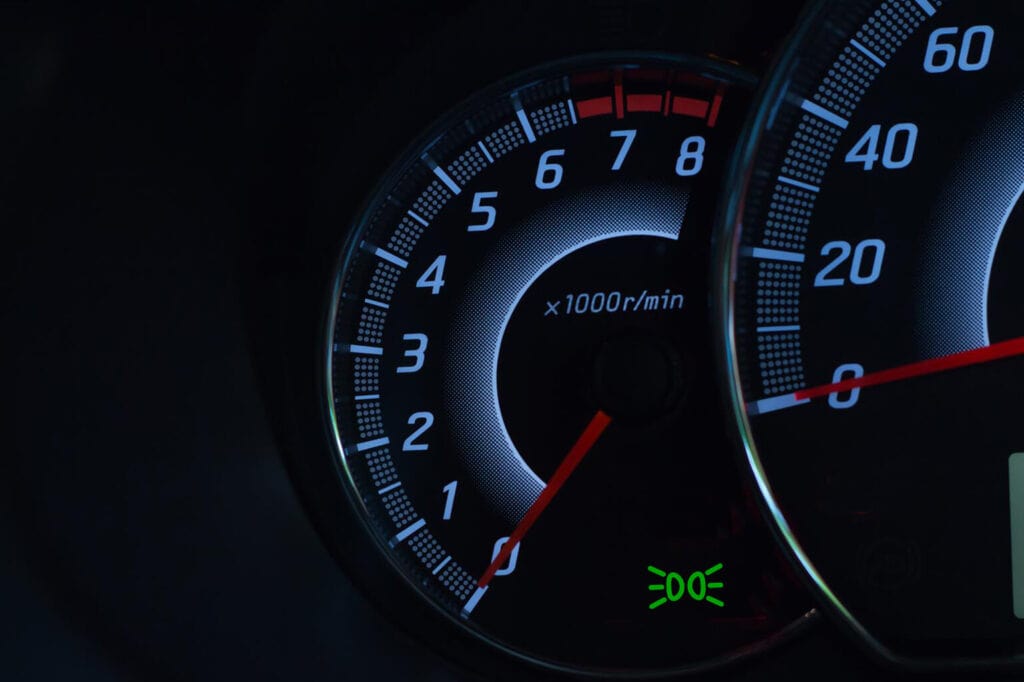Shedding Light on Park Lights — A Crucial Yet Overlooked Component
Have you ever wondered about that little light on your dashboard that comes on when you activate your parking lights? Often overlooked, yet crucial for safety and compliance, park light indicators are a small but mighty feature in your vehicle. In this comprehensive guide, we’ll illuminate everything you need to know about this often-underestimated element of automotive safety.
Decoding the Dashboard: Understanding the Park Light Indicator
When it comes to modern vehicles, the dashboard is essentially your control panel—it’s a digital cockpit loaded with symbols and lights designed to keep you informed. Among these myriad symbols, there’s one that often flies under the radar but is crucial for road safety: the park light indicator. Typically, it’s a modest icon that glows in an amber or green hue, unassumingly located among other more attention-grabbing indicators like the check engine light or the fuel gauge.
Don’t let its subtle appearance fool you. This indicator plays an essential role by communicating that your parking lights are activated, working to enhance your vehicle’s visibility in low-light conditions. Think of it as your car’s way of giving you a silent nod, a non-intrusive “Hey, just so you know, your parking lights are doing their job, making you more visible to other drivers.” And because parking lights are often multi-functional—sometimes serving as position lights or even daytime lights depending on the make and model of your vehicle—it becomes all the more critical to recognize and understand this humble dashboard indicator.
Ignoring this indicator light might seem like a minor oversight, but it can have implications for both safety and legality. Some jurisdictions have specific regulations around the use of parking lights, so failing to notice that they are on when they shouldn’t be could result in a ticket or fine. It also means you’re not taking full advantage of a feature designed to enhance your safety on the road, a tool in your arsenal that can help prevent accidents by making you more visible to other drivers.

The Purpose Unveiled: Position Lights, Daytime Lights, or Park Lights?
A common point of confusion is the difference between parking lights, position lights, and daytime lights.
• Visibility Objective: All three types of lights aim to enhance visibility but serve different purposes. Position lights help you get noticed, daytime lights make you more visible during daytime, and parking lights are versatile enough to do both.
• Location and Intensity: Position lights are generally low-intensity lamps found at the front and rear of the vehicle. They are not as bright as parking or daytime lights.
• Daytime Use: Daytime running lights are specifically designed to be on during daylight hours. They automatically activate when your vehicle is running and the parking brake is released.
• Multi-Functional Parking Lights: Parking lights can be used during daytime and nighttime, and may also serve as position lights depending on your car’s design.
• Legal Requirements: Different jurisdictions have varying laws concerning these lights. It’s crucial to know what your local laws say about the use of each.
• Switch Controls: These light settings are usually found on the same control dial or lever, often labeled clearly but sometimes represented by symbols, adding to the confusion.
Operation 101: Turning On and Off Your Parking Lights
Finding the park light control switch on your vehicle is a simple quest. In most cars, the knob or switch is situated on the dashboard or the steering column, often integrated into the same control as your headlights. A quick turn or flick is all it takes to activate or deactivate these lights. If you’re sitting there pondering how long you can keep those park lights on, ponder no more. Although it’s technically possible to leave them on indefinitely, doing so isn’t recommended. Just like leaving any other light or electronic device running in your car for extended periods, this could slowly yet surely deplete your battery, leaving you stranded or making that morning commute a real mood-killer.
Moreover, leaving your parking lights on isn’t just a potential strain on your battery; it can also cause confusion for other drivers. Parking lights are generally designed to serve specific purposes like enhancing your vehicle’s visibility when parked or during low-light conditions. When they are left on inappropriately, they can send mixed signals to other drivers, and in certain situations, might even contravene local laws or regulations. So, it’s best to use them only when needed and for their intended purpose. Turn them off when they’re not required to keep your vehicle functioning optimally and to stay in the good graces of traffic laws.
Blinking Warnings: Why Your Parking Lights Might be Flashing
• Battery Status: A rapidly blinking light could indicate a dying battery, signaling the need for an immediate battery check or replacement.
• Faulty Relay: An erratic flashing might be due to a faulty relay. A relay is an electrically operated switch that controls the circuit of the parking lights.
• LED Specifics: In cases where you have LED parking lot lights, a blinking pattern could indicate electrical issues such as a poor ground or a short circuit.
• Warning Indicators: A flashing parking light might also serve as a warning mechanism for some vehicle models to indicate malfunction in other systems.
• Professional Diagnosis: Persistent issues with blinking should not be ignored. Consult a mechanic for a thorough diagnostic test.
The Financial Side of Illumination: Costs and Repairs
When it comes to repairing or replacing park light components, prices can vary:
• Basic Bulb Replacement: The simplest fix, replacing a burnt-out bulb, could cost you anywhere between $10 to $20, depending on the make and model of your vehicle.
• Electrical Wiring: If the issue lies in the wiring, you could be looking at a cost ranging from $50 to $75. This involves labor charges for tracing back the electrical problem and fixing it.
• Relay Replacement: A malfunctioning relay might need replacement, and this can cost you approximately $20 to $50, excluding labor.
• LED Issues: If you have LED parking lights, repairing or replacing the electrical components can push the cost upwards of $100.
• Labor Costs: Depending on where you get the repair done, labor costs can significantly affect the overall expense.
• Preventive Measures: Regular maintenance and check-ups can help you avoid costly repairs in the long run.

Park Lights vs. Headlights: A Brightness Comparison
Ah, the age-old debate: park lights or headlights? Let’s cut to the chase—park lights are not brighter than headlights. If headlights are the stadium floodlights in the world of car lighting, think of parking lights as those ambient mood lights you use to read a book. They’re designed to increase your vehicle’s visibility to other road users, not necessarily to illuminate the path ahead. So, if you’re planning to navigate your way through a misty morning or a foggy evening, park lights can do the job without the glare that headlights might produce.
Yet, it’s important to know when to switch from one to the other. Park lights are your go-to for times like dawn and dusk, when the sky’s lighting is in that awkward stage—too bright for headlights but too dim for no lights at all. They’re also useful in conditions like light fog or rain, where visibility is compromised but not severely enough to warrant full-blown headlights. On the other hand, when night falls or you find yourself in a heavy downpour, it’s time to switch to your more powerful headlights to not only see but be seen. By understanding the unique features and limitations of both, you can optimize your use of them to ensure you’re always both visible and safe on the road.
Illuminating the Path to Smarter, Safer Parking
Parking lights may seem like small fries in the grander scheme of automotive features, but as we’ve discovered, they play a significant role in vehicle safety and compliance. Being proactive in understanding and maintaining this feature will serve you well in the long run. And if you’re ever in a bind with your park light indicators, don’t hesitate to contact Uchanics, your go-to mobile mechanic services in Canada, to shed light on any issue.
